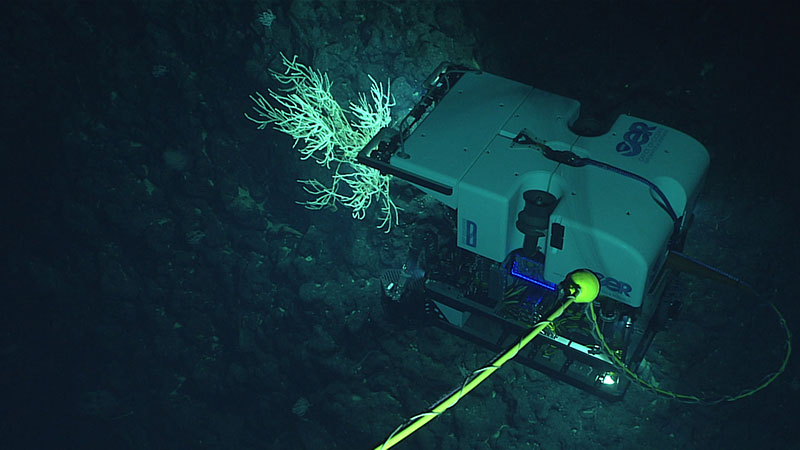-

D2 investigates a coral on an unnamed seamount west of Salmon Bank. Image courtesy of the NOAA Office of Ocean Exploration and Research, 2016 Hohonu Moana. Download larger version (jpg, 808 KB).
-
Dive 6: March 9, 2016: Sponges
Dive 6 took place on an unnamed seamount that was mapped for the first time during this expedition that is located west of Salmon Bank. Throughout the dive, scientists saw a wide diversity of beautiful undersea sponges. Video courtesy of the NOAA Office of Ocean Exploration and Research, 2016 Hohonu Moana. Download larger version (mp4, 79.3 MB).
-
Dive 6: Community
During Dive 6, scientists explored top portion of an unnamed seamount west of Salmon Bank. The seamount was mapped for the first time during this expedition and had never been previously surveyed, so no one knew what to expect. They found a diversity of animal communities. Video courtesy of the NOAA Office of Ocean Exploration and Research, 2016 Hohonu Moana. Download larger version (mp4, 21.6 MB).
-
Dive 6: Sea Stars
A look at a few of the seastars encountered during Dive 6 of the expedition on an unnamed seamount west of Salmon Bank. Video courtesy of the NOAA Office of Ocean Exploration and Research, 2016 Hohonu Moana. Download larger version (mp4, 21.5 MB).